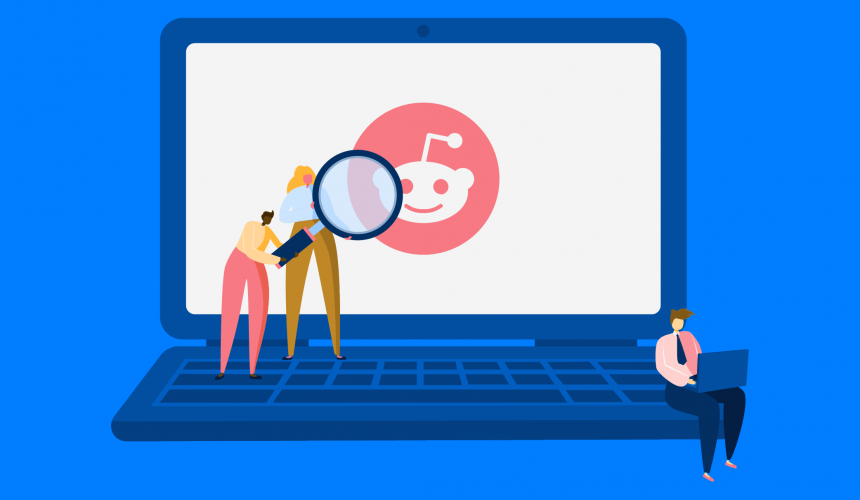How to Master Q4 – Marketing and Advertising Tips from the Experts:
Last updated: September 24, 2019
I recently wrote about how advertising rates increase during Q4, and what paid strategies you can implement to scale growth during these three months. Q4 is highly competitive in the digital marketing/advertising world as we all know. 72.5% of brands say that Facebook Ads are the number one way to attract new customers. So to help everyone out, I reached out to some of the best digital marketers I know to get some more balanced advice on growing your company during Q4 the holiday season. This is what they had to say…
John Doherty
Founder of GetCredo.com
Navigating Q4 is tricky for all of the reasons mentioned, and if you have not been building towards a big Q4 (if Q4 is meaningful for your business usually) then you’re already behind the ball. If you haven’t been preparing then I recommend that you start now preparing for a big Q4 next year by first setting goals and then reversing into a strategy to get you there. From there you can set your budgets for 2019 to execute on that plan. If you have been preparing then you need to do three things. First, make sure that your reporting (and communication up the chain of command) is clear on what you have done, what you are doing, and what you expect results will be. Second, you need to be prepared in case something happens like you are caught in an algorithm change or specific ad groups stop working. Third, make sure that you are reporting on year on year increases in traffic and revenue as seasonality hits a lot of businesses. This shows how your prior work is paying off.
Corey Eulas
Founder of FactorialDigital.com
At a high-level, my go-to advice for those seeking to shake things up a bit in their marketing strategy, especially Q4, is to take a chance. Take a chance at that crazy idea your analyst had, or on that vendor you were on the fence of, or even that quirky hire you met. Challenge yourself to step outside your comfort zones, for even just a quarter and push yourself to try something uncomfortable. You might be surprised at the results.
Britney Muller
Senior SEO Scientist at Moz.com
Site pruning! Improve the perceived quality of your website by getting rid of old, thin, low traffic web pages. Use meta=”noindex” to remove them from search results. Once they have been de-indexed, disallow them in robots.txt to help optimize your crawl budget.
Cyrus Shepherd
Founder of Zyppy.com
My best tip for improved search visibility this year is to check your website’s reputation with the rest of the internet. Google likes to rank real businesses with vetted expertise and rated services, so it’s helpful to evaluate what your website looks like through this lens. The simplest way to do this is often with a branded query that excludes your own website using the site: operator, for example:
wallaroomedia.com -site:wallaroomedia.com
A highly-regarded, real-world company with expertise and authority will see lots of other sites talking about them when performing this search. This could include social media profiles, business directories, review sites (hopefully with positive reviews) along with blogs and forums talking about your online business.
On the other hand, sites without external trust and authority signals are likely to have less Google visibility
Work on your internet footprint, improve your reputation, and enjoy better traffic.
Susan Wenograd
Founder of SusanWenograd.com and CMO of AimClear
Don’t be afraid to mix tactics and do NOT forget to remarket to different behaviors, despite what your campaign objective is.
For example, you might find the same video does better in remarketing to people who engaged with posts vs running it in a video views campaign where you retarget to watchers.. Test each kind of top-of-funnel driver to see what gets you the most favorable returns when you look at its spend plus your remarketing efforts to those users.
In the above example, let’s say you find a particular video does great when you remarket to users who engaged with posts as opposed to running that as a video view. You should actually have two remarketing setups in that case: one targeted users who engage with posts, and then also users who watched a certain amount of that video. Just because you are running an engagement campaign and not a video view-focused one doesn’t mean people aren’t watching it! This is an easy (and cheap) way to get two remarketing audiences from one effort.
The same goes for your conversion-focused ad endeavors. If it’s getting a great return, awesome, but don’t leave money on table! Make sure you have a video view remarketing group and an post engagement group set up to hit those folks again with more information or a different video.
In short: look at all the ways someone can interact with your ad, and map out remarketing audiences accordingly. Once you’ve paid the up-front money to build out that pool of users, you have a more captive audience that you can advertise further to with more specific selling points.
Joe Martin
Former head of Social Analytics at Adobe.com, currently at CloudApp
Q4 is generally a time chalked full of events and preparation for 2019. It provides a great time for reflection on what worked, and most importantly what didn’t work in 2018. The strategies you implement in Q4 will prime your audience for your new goals in 2019. Q4 is also a great time to entice customers with holiday related offers and prep for new years resolutions. The customer psyche in both B2B and B2C during Q4 is one of new growth, new strategies, spending, and improving. Campaigns that focus on these elements and how your product or service can help reach goals will go along way. I expect Q4 probably has the most “offer” related options to consumers than any other quarter especially in retail.
Akvile DeFazio
President at Akvertise.com
There’s still time to get your ecommerce campaigns firing on all cylinders in effort to drive more sales around Black Friday and through your final shipping dates before the holidays. During this concluding quarter of the year, test out Facebook Messenger, Messages objective campaigns with your remarketing custom audiences to drive ecommerce sales. Use a strong call to action headline that entices users to send your brand a message. When the Messenger window opens, create a personalized greeting with three custom questions, the top one being your conversion acquisition such as “Shop Latest Styles” or “Shop Now & Save %”, followed by two other helpful but not as prominent links to your FAQ and Contact Us page. This has out-performed conversion objective campaigns for a number of our clients in recent months and we too, plan to continue testing it out into the holiday season.
Kirk Williams
Founder of ZatoMarketing.com
When thinking through preparing for and executing well in the realm of Paid Search during the holidays, two crucial topics come to mind:
Budgeting and Bidding.
Budgeting in Q4 is essential, because we typically see an increase for various reasons (higher CPCs, successful management leading to increased budgets year over year). Because of that, I think it’s important to analyze the previous year’s total Paid Search budget for Q4 (perhaps even including January 31 depending on how much of a “gift card lag” you see in sales) and then as a rule of thumb I like to use this formula:
Previous year Q4 budget
+ whatever your budget changes have been this year
+ a 15% bumper.
=
2018 Paid Search Q4 Budget.
For instance, if you are already spending 20% over 2017 YTD and last year’s holiday season (Nov-Dec) saw $100,000 in total Paid Search spend, then according to this formula you will want to budget $138K for the 2018 holiday season.
This will ensure you (1) remain in continuity with your 2018 YTD increased spend, as well as (2) leave room for the market to fluctuate (that’s the 15% extra) so you avoid late night calls on Black Friday to your CMO requesting more budget since competition was more aggressive this year in the holiday season than you expected. You might still have to make that call, but this way you are at least accounting for some variables before-hand!
The second thing to consider are bidding adjustments. You need to be cautious with automated bidding if your industry sees significant changes on key dates (Black Friday and Cyber Monday) as Google’s algorithms can sometimes struggle to keep up with drastic changes since those algos are based on historical performance. I also think it’s a good idea to be willing to bulk shift your normal product group or keyword bids up depending on what you normally see in your industry to ensure you don’t get caught sleeping on Black Friday morning.
Last but not least, don’t forget to bump up your Google and Bing Daily Budgets for those key dates… the last thing you want to do is accidentally cut off traffic half-way through the day because your campaign budgets are set to the normal daily default. An easy mistake to make, but one that will kill a holiday!
AJ Wilcox
Founder at B2Linked.com
1. Audience Segmentation
Break your LinkedIn audiences up into micro-segments! If many audience facets are mixed together in one single campaign, whether it performs poorly or well, you have no learnings. Instead, if you break them up by seniorities, geography, industry, etc., then you’re always learning. You’ll find interesting nuggets like CMOs have higher conversion rates than Marketing Managers so you have lower CPLs, but they’re harder to get on the phone, so their Cost per Sales Qualified Lead may be higher.
With those insights on your audience segments, you can then take action on bidding one up, limiting budget on another, and ultimately what types of content to customize for which audience.
2. Bid CPM on High-CTR Campaigns
It’s no secret that LinkedIn Ads are expensive, so we at B2Linked.com take every opportunity for a discount possible. One of such discounts comes from taking advantage of campaigns with high levels of engagement.
We recommend always starting out with CPC bidding. This shifts the risk of a poor-performing ad to LinkedIn, because if you create a poor ad that doesn’t get clicked, you don’t pay. Once you’ve found an ad that is getting a CTR of over 1% for Sponsored Content ads or .06% for Text Ads, then switch to CPM bidding.
Since the click performance of these ads is well over the average, but you’re only paying for the impressions, you’ll get big discounts on your effective Cost per Click.
Make sure to bid high when bidding CPM, though, since you need your ads to show in the first feed position to keep CTRs as high as possible.
Luke Alley
VP of Digital Marketing at AvalaunchMedia.com
We’ve seen some great wins this year combining highly visual content + paid social amplification. You get the reach of a big PR push, the focused targeting of paid ads to reach the right audience, and the link equity of a SEO campaign. One recent campaign with highly geo-specific imagery, messaging and targeting had a minimal budget but resulted in out-of-the-park engagement, traffic and links.
Hopefully you can come away from this post with some great actionable insights that you can apply to your business right away!
Need help? Contact us today to scale your social media advertising efforts!





